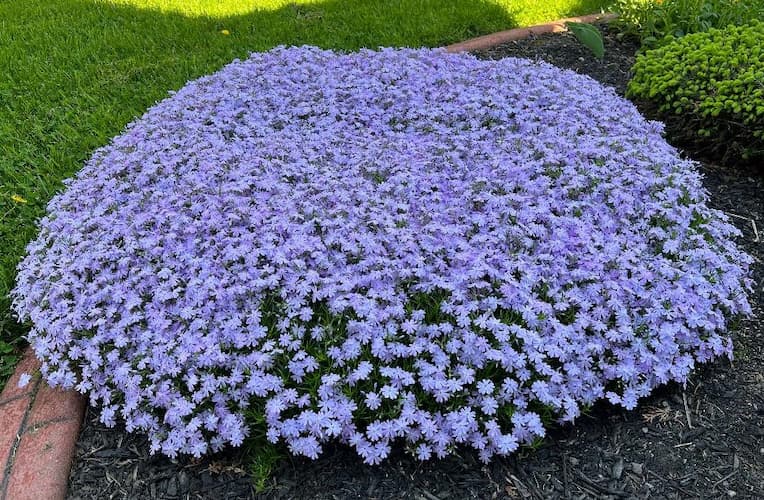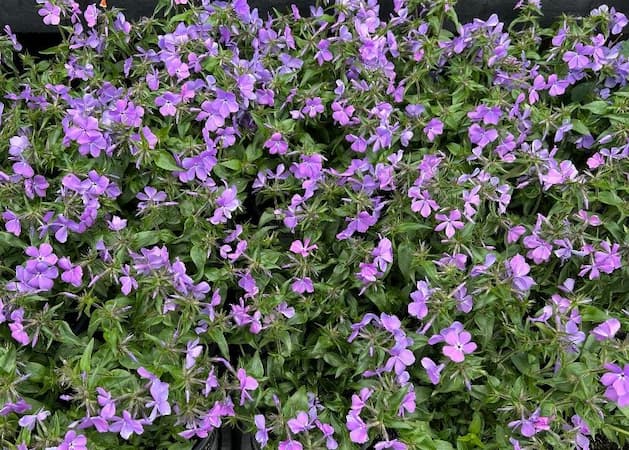How to Grow and Care for Phlox Flowers

About Growing Phlox in Your Home Flower Garden
Phlox plants are an old-fashioned flower, that deserves more recognition than it gets. The large clusters of flowers are very showy. Although some varieties will grow to 4 feet tall, the most common varieties are small, growing just up to 18 inches. The most common Phlox are annuals. There are also perennial varieties. Phlox is native to North America, from New York west to Michigan and south to Maryland. If you’ve never grown them before, growing Phlox flowers will be a rewarding experience.
Despite their small size, Phlox make good-cut flowers and are great in containers or window boxes. They will look great filling in a flowerbed, or as a border edging.
A native of North America, the jewel-like Phlox flowers grow in clusters at the top of the stems. These bright-colored blossoms include shades of red, purple, scarlet, yellow, and white, some with a flirty eye.
The name Phlox comes from a Greek word meaning “flame”. It is at home in a wide variety of settings. They are a popular choice for cottage gardens. And, they are right at home in containers that you can place on your balcony or deck.
Did you know? Wild Sweet William is a specific variety of Phlox.
Phlox Flowers Plant Specifications
Flower Colors: Lavender, lilac, pink, purple, salmon, and white.
Flowers Bloom: Summer to Fall frost.
Plant height: 2 to 4 feet tall.
Ideal Soil pH: 6.5 – 7.5.
Hardiness Zones: 4 – 8
Light Requirements: Partial sunlight to full sun.
Is the Plant Toxic? No. However, eating a large quantity at one sitting can cause a stomachache.
Deer Resistant? Yes. The plants have a strong fragrance. And the leaves have a rough, prickly texture. As a result, deer, rabbits, and other foraging animals avoid Phlox.
Native To: North America and Siberia.
Number of Species: 68
Plant Type: Annuals and Perennials.
Botanical Name: Phlox
Are Phlox Flowers and Plants Edible?
Essentially NO!!
Only one species is edible. So, don’t put this plant on your dinner menu tonight or any other night.
Medicinal Applications for Phlox Flowers and Plants
Phlox has numerous medical uses. It has anti-inflammatory properties. Ancient cultures used it. And, today there are several home remedies that use phlox plants.
Here are some of the medicinal uses:
- Prepare a poultice from crushed Phlox leaves to relieve insect bites and to treat a variety of skin irritations.
- Use it to relieve indigestion and gastrointestinal problems.
- Many indigenous cultures use it to ease respiratory problems including coughs, chest congestion, and sore throats.
- It helps to reduce bloating.
- It promotes the healing of wounds.
Light Requirements
Phlox plants grow their best in partial sunlight. They benefit from light shade during hot, summer afternoons. They also do well in full sunlight. So, the ideal location is the east side of a house or shed.
Phlox Plant Propagation
The plants are grown from seeds. Phlox seeds can be directly seeded into your flower garden.
For outdoor starts, sow Phlox seeds early in the season and cover lightly with 1/8″ of fine garden or potting soil. Water thoroughly once. Then, keep the soil moist while the seeds sprout.
Also, you can start them indoors for transplanting later. For early blooms, start the plants indoors six to eight weeks before the last frost. Young seedlings will transplant well into their permanent home.
Plants can also be propagated by division. Divide and replant clumps of Phlox right after the blooming period, or in early fall.
Transplant Phlox into your garden after the last frost date for your area.
Final Plant Spacing: Space plants 8-10″ apart. They will tolerate a little crowding.
Days to Germination: 10 – 20 days.

How to Grow Phlox Flower Plants
Select a planting site:
Phlox plants grow their best in partial sunlight. However, they will do well in full sun, too. They prefer rich, loose soil that drains well.
Water Needs:
Keep the soil moist to slightly dry. Water them during dry periods, once or twice per week.
Feeding your Phlox plants:
At planting time, mix in a generous amount of compost. You can add well-rotted manure, too. Apply a general-purpose fertilizer once a month during the growing season.
Use a fertilizer high in phosphorous just before the blooming period. This enhances the development and growth of the flowers.
Weeding and Mulch:
Once your Phlox plants are established, they should grow well with few problems. Keep the plants well-weeded, especially when they are young. Then after they have grown a few inches, apply a 2–3-inch layer of mulch to help retain soil moisture and for a tidy appearance.
Pinch back tall stems to promote a bushier appearance.
The plants do not need staking.
How to Grow Phlox Flowers and Plants in Containers and Flowerpots
Shorter varieties of Phlox plants look great growing in containers on your balcony or deck. We recommend trying annual and non-creeping varieties.
Like any container-grown plant, they need a little more care and attention. In addition to normal plant care, here’s how to grow Phlox flowers in containers:
- These flowers look great grown in masse and tolerate a little overcrowding. So, grow them in containers a little closer than the normal recommended spacing.
- Select a partly sunny location on your deck.
- It is important to have a drain hole in the container to allow excess water to drain from the pot.
- Keep an eye on the moisture level. Check the plants every few days, especially in extended periods of hot, dry weather.
- Keep the soil moist, but not wet. It is okay to let the top of the soil begin to dry between watering.
- When watering the plants, thoroughly wet the soil. Excess water will drain through the hole in the bottom of the flowerpot.
- Nutrients in a flowerpot are limited. So, use fertilizer spikes to feed the plants. Or, apply a light solution of liquid fertilizer once a month.
Pruning Phlox Plants
After the plants reach a foot or so tall, pinch back the growing tips. This produces more stems and creates a more shapely plant. And, it results in more blooms, too.
During the growing season, remove any dead or sickly leaves and stems as soon as you spot them. If the plants appear too thick and close together, thin them out a little. This increases air circulation and helps to avoid plant diseases.
Remove spent blooms to promote additional blooms and extend the blooming period all summer long, and right up to the first killing frost. This will also keep the appearance neat and beautiful.
If you want to harvest some of the seeds, leave a few spent blooms on the plant.
More on Deadheading Spent Flower Blooms.
Insects and Plant Disease
Nematodes can be a problem when growing phlox. Treat early with insecticides specific to nematodes.
Disease problems are infrequent. Thinning the plants helps to improve air circulation and lowers the risk of plant disease. If disease problems arise, treat it early with fungicide.
Also see: Plant Problems – Identify the causes and find the cures.
Overwintering Phlox Plants
Hardy annual Phlox varieties often survive the first few light touches of frost. However, they will not survive a hard frost or freeze.
Perennial varieties go dormant after a killing frost, until next spring. At this time, you can cut the plants down to the ground. Then, apply a layer of mulch to protect the roots. As the mulch breaks down it feeds the plant, too.
Related Articles
Also, people who read this article on Phlox flowers will like:
How to Grow Phlox Plants – by Garden Hobbies
Please support our site. Shop for:
- rmmatthews100@hotmail.com
- 585-721-6528
- Rochester, NY
©1999-2024 GardenersNet.Com, All Rights Reserved

